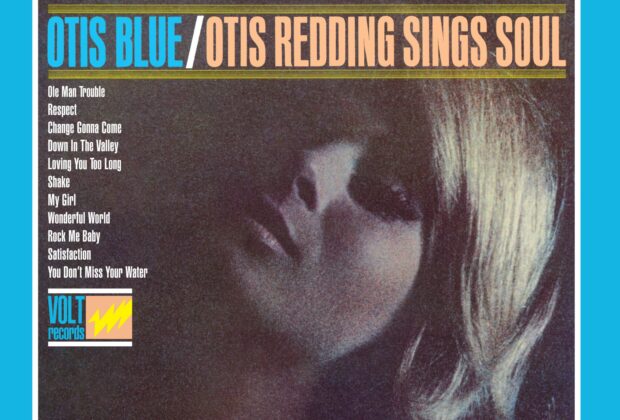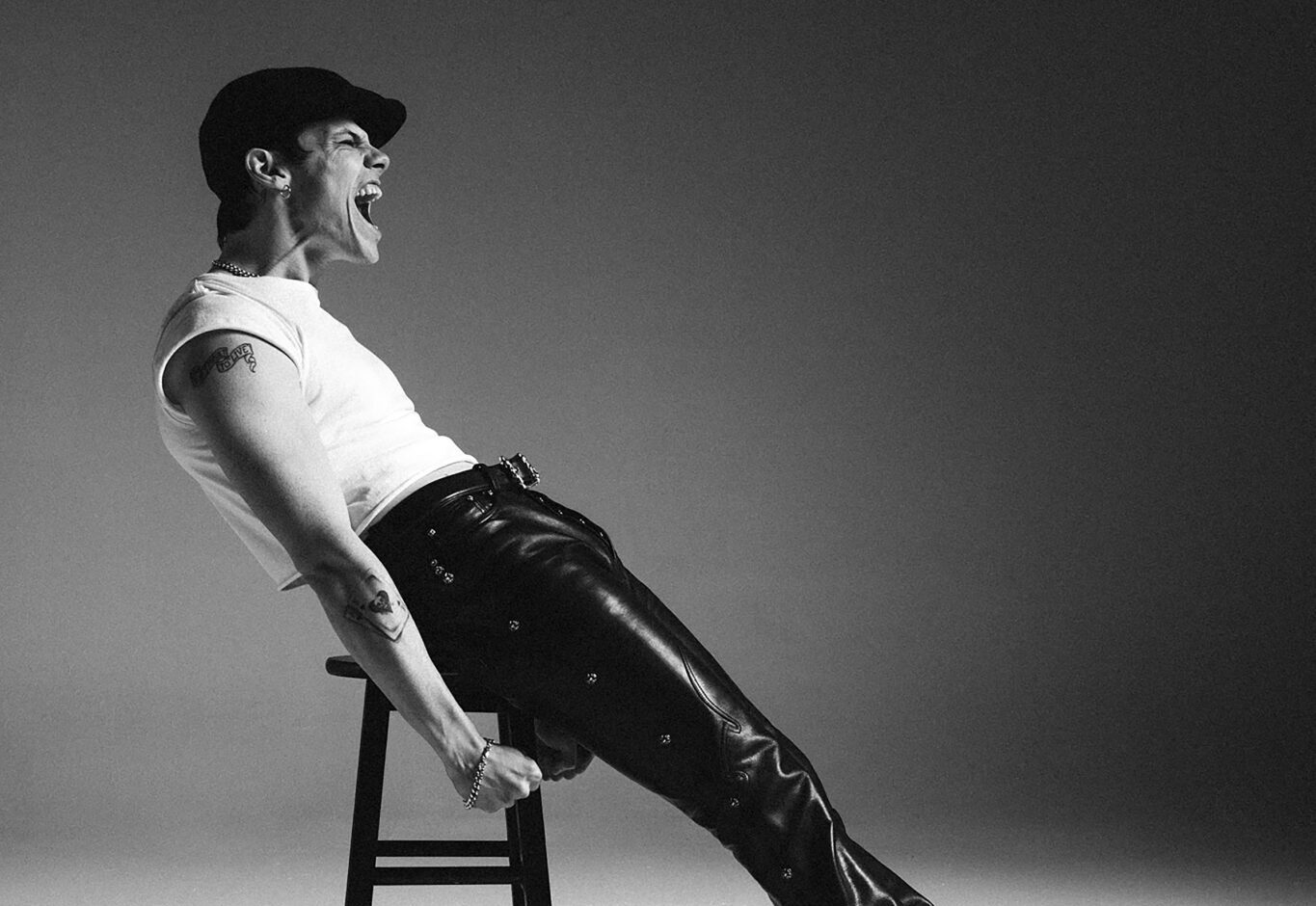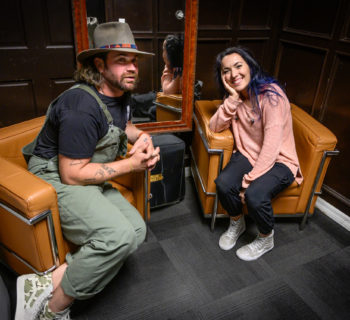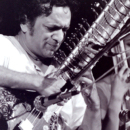Otis Redding
Otis Blue/Otis Redding Sings Soul (Rhino Records Reserve collection)
180 Black Vinyl Re-Release
Between 1962 and 1967, Otis Redding was a creative dynamo, recording frequently at Stax Records in Memphis, Tennessee with Booker T. & The MG’s – keyboardist Booker T. Jones, guitarist Steve Cropper, bassist Donald “Duck” Dunn, and drummer Al Jackson Jr. During his lifetime, Redding released six studio albums and a succession of R&B and Top 40 hits (“These Arms Of Mine,” “Respect,” “Try A Little Tenderness”) that helped transform Stax from a small Memphis record label into a global musical institution.
On June 27, 2025, vinyl enthusiasts can grab a pristine reissue of Redding’s raw soul classic Otis Blue/Otis Redding Sings Soul. This 180-gram black vinyl comes fresh from Fidelity Record Pressing in Oxnard. The LP runs at $31.98, and is part of a new premium Rhino Records Reserve collection.
Collectors will find this album easy on their bank accounts. At $31.98, it comes in well below Atlantic 75's hefty $60-$65 price point and beat High Fidelity's $39.98 offering.
Audio expert Chris Bellman from Bernie Grundman Mastering handled the vinyl cutting. Each record comes packed in sturdy cardboard sleeves featuring custom Rhino Reserve artwork. The Oxnard pressing plant combines traditional methods with modern technology. Their team carefully monitors each production step to ensure flawless sound quality.
Otis Blue/Otis Redding Sings Soul, originally shipped to retailers in September 1965 on Stax Records' Volt label. This epic delivered hits like "I've Been Loving You Too Long," plus Redding's powerful cover of the Stones' "(I Can't Get No) Satisfaction" and the original version of "Respect."
Otis Blue/Otis Redding Sings Soul for select retailers is perfectly timed for Black Music Month celebrations.
The LP housed a slew of cover versions of contemporary R&B hits. Three tunes were penned by music legend Sam Cooke: “Wonderful World,” “Shake,” and “A Change Is Gonna come.” Redding wrote three songs, one, co-written with Jerry Butler of the Impressions, “I’ve Been Loving You Too Long.”
Other tracks are “My Girl,” by Smokey Robinson and Ronald White for the Temptations, B.B. King’s “Rock Me Baby,” the Rolling Stones “Satisfaction,” courtesy of Mick Jagger and Keith Richards, plus William Bell’s "You Don’t Miss Your Water.”
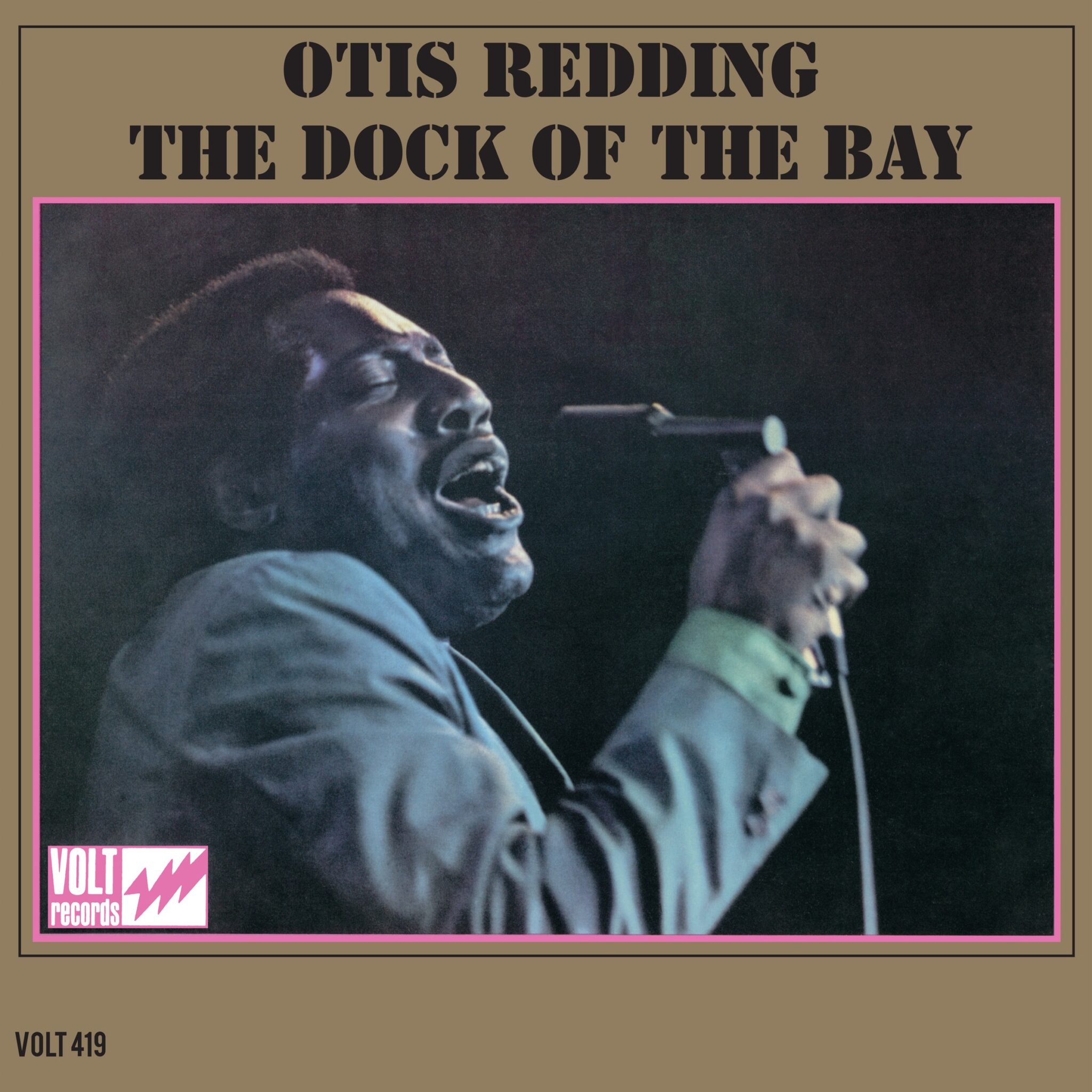
The entire Otis Blue/Otis Redding Sings Soul, with the exception of one track, “I’ve Been Loving You Too Long,” was cut over a 24 hour period from July 9 to 10, 1965, at the Stax recording studio. The Musicians collaborating with Redding are the Stax house band Booker T. & the MG’s, with pianist Issac Hayes and a horn section supplied by members of the Mar-Keys, including Wayne Jackson, and the Memphis Horns. The LP was produced by Jim Stewart and guitarist Steve Cropper.
Otis Blue/Otis Redding Sings Soul was initially released on September 15, 1965 by the Volt label in the US.
On October 17, 1965 our Los Angeles radio station KHJ “Boss 30” record play listed “Respect” as number 14. The city was already deep into the Redding repertoire. R&B soul radio stations played Redding regularly and touted his anticipating visit to the Whisky A Go Go in West Hollywood on Sunset Blvd.
Just before his ’66 Whisky debut, Redding on April 2 performed at the Hollywood Bowl as part of a KHJ-produced listener show to benefit the Braille Institute of America. KHJ-AM program director Ron Jacobs from 1965-1969 constantly programmed Redding and tracks from Stax Records. The April ’66 Hollywood Bowl event billed Redding, Donovan, Sonny & Cher, Bob Lind, the Knickerbockers, the Turtles, Jan & Dean, the Modern Folk Quintet, and the Mamas and the Papas.
Two Otis Redding numbers—“I’ve Been Loving You Too Long (To Stop Now)” and “Respect”—had cracked the Pop Top 40, and a number of his recordings inspired covers by rock ’n’ roll bands, especially the Rolling Stones and his version of the group’s best-known song, “Satisfaction” was soaring up the singles charts in April 1966.
I also attended the KHJ 1967 Hollywood Bowl concert, tickets were $.93 cents, with the Supremes, Johnny Rivers, the Seeds, Brenda Holloway, Fifth Dimension and Buffalo Springfield. It was a benefit for the UCLA United Negro College Fund and the UCLA School of Music.
By 1966, The Whisky had already initiated an integrated patron and live music booking policy that welcomed Otis and company with open arms. The club had booked the Otis Redding Revue and entourage which included an emcee and a full 10-piece band (led by saxophonist Robert Holloway) coupled with three up-and-coming singers.
Occasionally, when Redding and other R&B acts and rock bands played the venue in 1966-1970, I was outside the club as a teenager. My local West Hollywood library was down the same street from the Whisky A Go Go on San Vincente Blvd.
The news was out that Otis was in town and I just wanted to see Otis Redding’s name on the Whisky A Go Go marquee. That was cool enough. The idea of actually going inside the building without hassle wasn’t even considered. I had to wait until I was age 18 when John Mayall & the Bluesbreakers and Savoy Brown shared a bill at the Whisky in 1968 before I was allowed to legally enter the house of worship.
“I remember seeing Otis at the Whisky,” Robby Krieger of the Doors told me in a 2012 interview. “I was standing right in front of the stage for the whole show. I never heard of Otis Redding before and I was amazed at the energy that he created on stage. I would stand right there on the dance floor, stage right.”
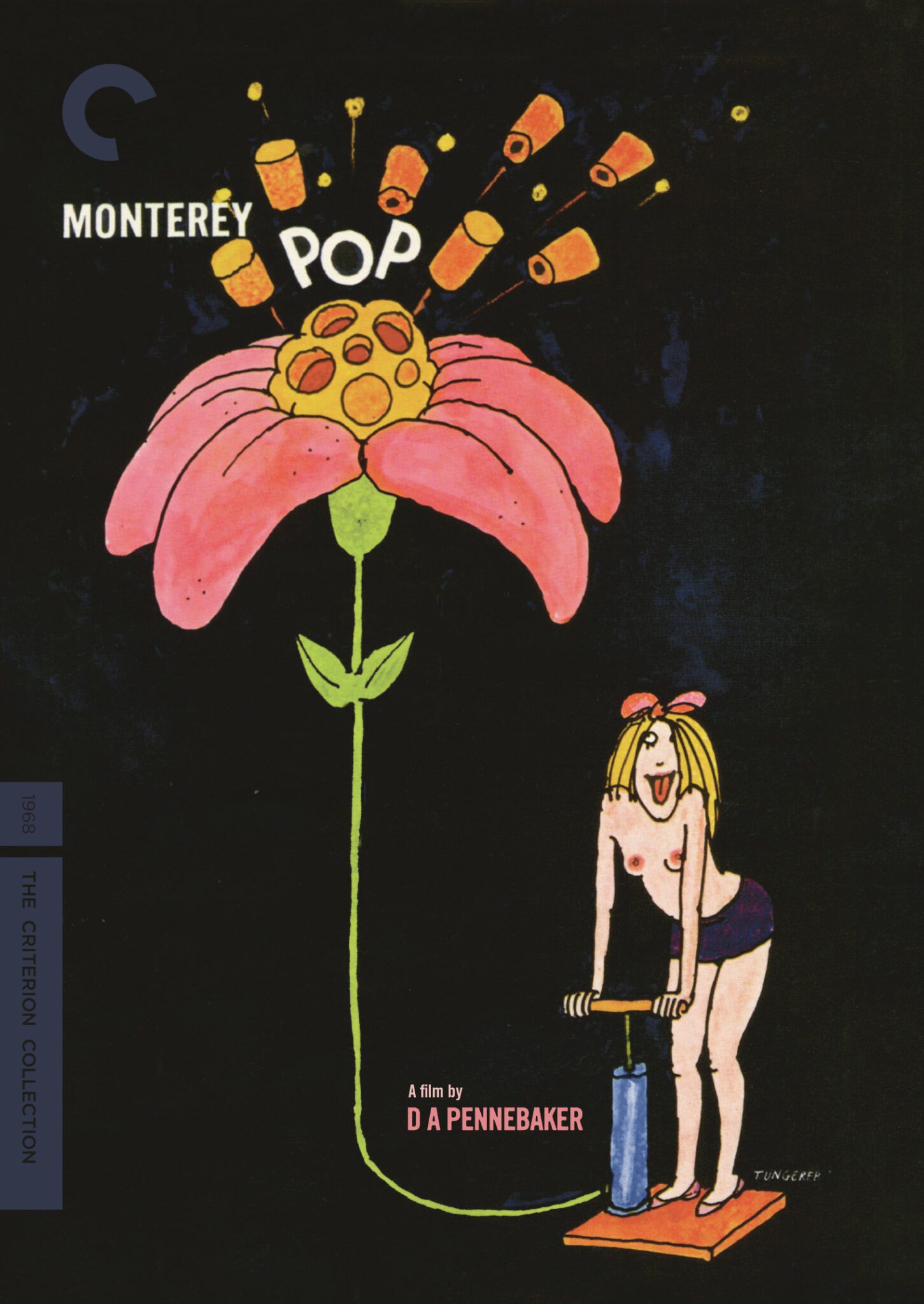
Krieger penned the tune “Runnin’ Blue” that appears on the Doors’ 1968 album The Soft Parade.
“I wrote the song 'Runnin' Blue,' but when Jim [Morrison] started to sing it, he just came up with that ‘poor Otis dead and gone’ part right on the spot. Seemed to fit pretty good so we left it in. I guess the horn parts reminded him of Otis."
The Byrds’ Chris Hillman saw Redding at the landmark venue. “I thought Otis Redding was unbelievable,” marveled Chris in a 2017 interview with me. “[Drummer] Michael Clarke and I went, sat down with him, and he bought us a drink. Sweet man. Mike and I on the early Byrds tours, we used to take battery-operated tape recorders and loved listening to R&B and blues.
“I remember watching Otis…I can’t compare it to anyone. Even my brief viewing of the Beatles at the Hollywood Bowl. They were so good but they had to keep stopping the show. Screams, but they were so tight. Otis Redding…It was like…I remember watching Otis Redding and I had seen Sam & Dave at the Whisky. And that was just a whole other level of professionalism. We took everything so laissez-faire out here. We weren’t entertainers. You follow? We weren’t supposed to be a Las Vegas act. But that would have taken the whole mystery out of the Byrds or the Buffalo Springfield, or any of those bands. But those guys were real professionals. They moved, they danced, and went into songs.”
In the spring of 1966, at age 24, Otis Redding was a star on the R&B circuit and soul radio station airwaves. The singer/songwriter was receiving critical and commercial success off his third studio album, Otis Blue/Otis Redding Sings Soul, and was watching his singles cross over to the pop charts.
“In 1966, and ’67, and all through Jefferson Airplane, we did my tune ‘It’s No Secret,’ recalled band co-founder Marty Balin in a 2025 interview we conducted.
“I originally wrote it with Otis Redding in mind. It was for him. I used to hang out with Otis and follow him around like a little puppy dog and watch his shows. I just wanted to write him a song that had his kind of groove thing I thought. But Otis never did it. He did write his own songs.
“In fact, I was the guy who took the 45 single record of Otis’ ‘These Arms of Mine’ to [San Francisco concert promoter] Bill Graham. ‘Hire this guy. I want to see him!’ And Bill Graham did. December of 1966. He would listen to the bands of who to book and as support or lead acts. Otis was the most powerful person I’ve ever seen perform. Outside of anybody you name. I’ve seen a lot of people play and on TV. I’ve never seen anybody handle an audience like him and rock the joint. The energy level was amazing with this guy. He had that great horn section.”
During 2017 I discussed Otis Redding with Stax mainstay, trumpet player Wayne Jackson.
“Otis always brought a great contribution to all the sessions he was on. He was educated. Otis used a guitar to write songs and would use open key. So, he could just bar it put a bar on his finger and play up the scale and chords. He could easily write with it. When I was with Otis, he was on another energy track. Otis was like a 16 year old boy with a hard on all the time!
“Because all he could think about was writing a song and getting into a studio. That was his life. Zelma and those kids and the farm and his music in that order, I think. But outside of the farm he didn’t think of nothing but his career. Otis did an amazing body of work in the six years he was recording.
“I just feel absolute joy and thrilled and my luck was that good and God was that good to me to put me into that situation as an 18 year old. I was there the whole time and thrilled the whole time. I loved Otis and he loved me. We were big friends. ‘Cause we all liked to laugh, and we were all young and the testosterone levels were out of this world. That’s what you heard in that music.”
“Everything Otis touched he made it his own,” underpinned Steve Cropper, “like Sam Cooke’s ‘Shake.’ All of those things, you listen to them, and it’s sort of like a great actor, like if Gene Hackman takes a part, or if James Stewart takes a part, they become that character. And at the time you watched it you became part of them. You know what I’m saying? You don’t think about somebody else doing it.”
On the weekend of December 10, 1967, Redding played a fraternity dance at Vanderbilt University in Nashville on Friday, December 8th and caught a flight to Cleveland Ohio to watch the Temptations’ late set at the Leo’s Casino venue.
He then taped Upbeat TV program in Cleveland and at Leo’s Casino on Saturday night. On December 8th, Redding and four members of the Bar-Kays, his backing band, died when his private twin-engine Beechcraft airplane crashed on approach to Truax Field in the icy waters of Lake Monona, Wisconsin on their way to the Factory nightclub show three miles from the University of Wisconsin in Madison. Ben Cauley, the trumpeter, survived the accident.
Singers Joe Simon and Johnnie Taylor were two of the pallbearers at Redding’s funeral at Macon City Auditorium in Macon, Georgia. James Brown, Wilson Pickett and Solomon Burke were among the 4,500 mourners. Atlantic Records’ Jerry Wexler provided the eulogy as Booker T. Jones played the organ to the saddened congregation.
The Dock of the Bay is the first of a number of posthumously released Redding albums. It incorporates a number of singles, B-sides, and previously issued album cuts dating back to 1965. The LP showcases one of Otis’ best-known songs, the Redding/Cropper posthumous hit, “(Sittin’ On) The Dock of The Bay.”
Redding’s final recording session with producer Cropper happened December 7th, before his death December 10, 1967.
In June 1967, Booker T. & MG’s performed with Redding at the Monterey International Pop Festival.
In 2017, band co-founder Cropper provided an insight into “(Sittin On) The Dock of the Bay.”
“The way I recall it, they took us over to the festival in a school bus, we could hear the music. We heard a concert going in that afternoon. Now, we didn’t play until that night but they took us over early, ‘cause some of the guys wanted to hear some of the other artists. And, the Association was on stage as we pulled up, and I will never forget that.
“And here’s a connection, and I always loved their records on the radio, the influence of the Association in 1966, ’67, that the bridge on ‘(‘Sittin’ On) The Dock of The Bay’ that I wrote with Otis was inspired by my like for their music. Hearing them was a little thing, but that was the inspiration for it, because we knew we had a hit, and we wanted to make it pop.
“To me the Association loved R&B but they were a pop group. You know what I’m saying? So that’s sort of the way I was trying to go with that. Of course, with Otis singing it became an Otis song. He got the idea [for the lyrics] when he was staying at a houseboat in Sausalito, California in August ’67 when he was workin’ the Fillmore West.”
The D.A. Pennebaker-directed Monterey Pop documentary followed in December 1968, which helped unthaw Redding’s frozen legacy.
I attended the world premiere with my Fairfax High School class mate Leslie Wilk at the Fine Arts Theater in Beverly Hills.
“Otis Redding was stunning,” D.A. Pennebaker enthused in a 2006 interview with me.
“It’s a great film, almost a perfect film. He had a pretty good band, I was editing, or re-editing the section of his for Monterey Pop in late ’67 and changed the film a little bit when he went in to the lake. I remember that’s when I got into all that stuff of doing things with the lights. And I know at the time I felt, ‘Gee. What am I doing? This is crazy.’ But I left it that way because I felt so bad that he kind of died on us and that made me sad. So, it was the only thing I could do to mark that was to edit that way.”
Harvey Kubernik is the author of 20 books, including 2009’s Canyon Of Dreams: The Magic And The Music Of Laurel Canyon, 2014’s Turn Up The Radio! Rock, Pop and Roll In Los Angeles 1956-1972, 2015's Every Body Knows: Leonard Cohen, 2016's Heart of Gold Neil Young and 2017's 1967: A Complete Rock Music History of the Summer of Love.
Sterling/Barnes and Noble in 2018 published Harvey and Kenneth Kubernik’s The Story Of The Band: From Big Pink To The Last Waltz. In2021 the duo wrote Jimi Hendrix: Voodoo Child for Sterling/Barnes and Noble.
Otherworld Cottage Industries in 2020 published Harvey’s Docs That Rock, Music That Matters. His Screen Gems: (Pop Music Documentaries and Rock ‘n’ Roll TV Scenes) is scheduled for a 2025 publication date.
Harvey wrote the liner notes to CD re-releases of Carole King’s Tapestry, The Essential Carole King, Allen Ginsberg’s Kaddish, Elvis Presley The ’68 Comeback Special, The Ramones’ End of the Century and Big Brother & the Holding Company Captured Live at The Monterey International Pop Festival.
During 2006 Kubernik spoke at the special hearings by The Library of Congress in Hollywood, California, addressing archiving practices and audiotape preservation. In 2017 he appeared at the Rock and Roll Hall of Fame in Cleveland, Ohio, in their Distinguished Speakers Series. Harvey was a panelist at The Grammy Museum in Los Angeles in 2023 discussing director Martin Scorsese’s documentary on The Band, The Last Waltz.

